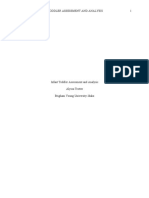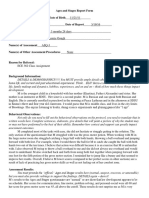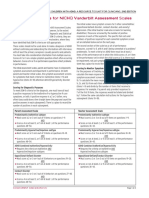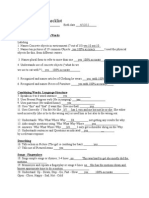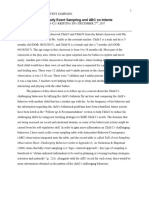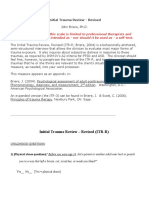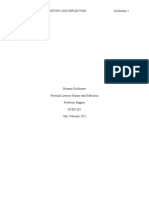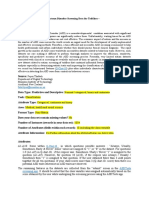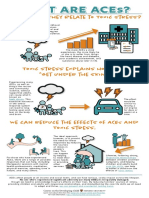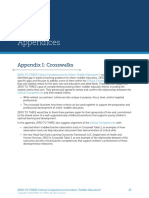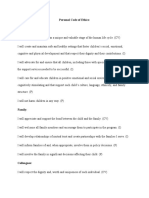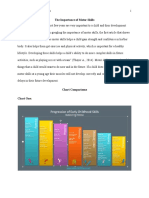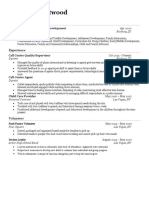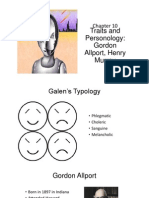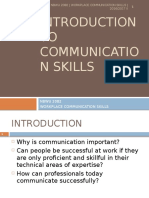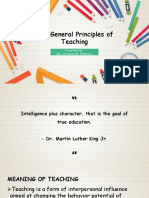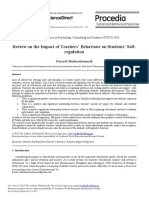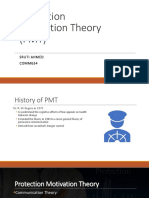0% found this document useful (0 votes)
164 views12 pagesInfant Home Assessment Guide
The document summarizes the results of administering the Home Observation for Measurement of the Environment (HOME) assessment to evaluate the home environment of a 16-month-old infant, Dustin, and his family. The assessment examines six constructs: responsibility, acceptance, organization, learning materials, involvement, and variety. For each construct, the document discusses the family's scores, how they compare to averages, and areas for potential improvement based on research. Overall, the assessment found the home environment supports Dustin's development, though some minor adjustments could further enhance his cognitive and social growth.
Uploaded by
api-526898274Copyright
© © All Rights Reserved
We take content rights seriously. If you suspect this is your content, claim it here.
Available Formats
Download as DOCX, PDF, TXT or read online on Scribd
0% found this document useful (0 votes)
164 views12 pagesInfant Home Assessment Guide
The document summarizes the results of administering the Home Observation for Measurement of the Environment (HOME) assessment to evaluate the home environment of a 16-month-old infant, Dustin, and his family. The assessment examines six constructs: responsibility, acceptance, organization, learning materials, involvement, and variety. For each construct, the document discusses the family's scores, how they compare to averages, and areas for potential improvement based on research. Overall, the assessment found the home environment supports Dustin's development, though some minor adjustments could further enhance his cognitive and social growth.
Uploaded by
api-526898274Copyright
© © All Rights Reserved
We take content rights seriously. If you suspect this is your content, claim it here.
Available Formats
Download as DOCX, PDF, TXT or read online on Scribd
/ 12
